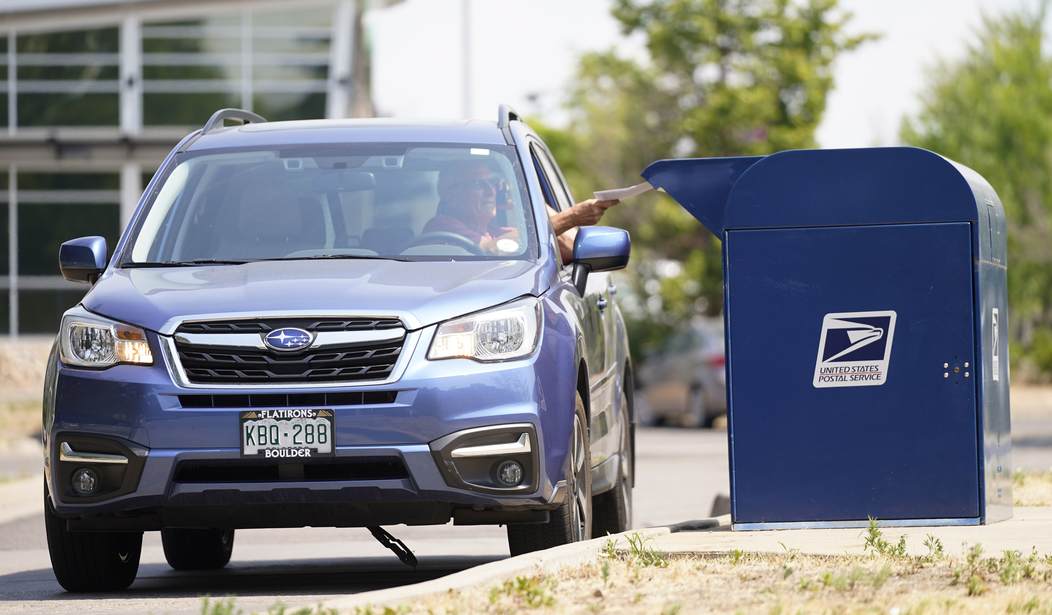What should we do with a quasi-government agency that supplies a vital service to a small percentage of the American people but is becoming more expensive and less timely as time goes on?
The United States Postal Service once helped connect this continental country from end to end. For many, it was their only connection to the outside world. Even today, remote areas of Alaska with no internet or phones are connected to the rest of us only via the post office.
But maintaining a postal service that can service areas like that as well as compete in the larger world of package delivery is proving to be a ghastly expense. There are a few million people living too far from a pharmacy who need the postal service to supply them with medicines they need to live. But outside of a few pockets of shut-ins and rural residents, the necessity of the USPS has vanished.
The Postal Service has a deal with Congress to relieve the USPS of a $5 billion a year payment for health and pension benefits. It’s contingent on maintaining Saturday delivery and continuing service to rural areas. The Postal Service Reform Act would separate 2 million postal workers and retirees from the federal program, creating a smaller, riskier pool of participants thus raising premiums on some workers.
There’s no doubt that a private carrier could deliver mail to urban areas, do it more cheaply, and probably quicker. But privatizing the postal service is not the total answer and until Congress can come up with a viable solution, the American taxpayer is stuck with supporting an albatross.
Postmaster General Louis DeJoy has come up with a 10 year plan that he says could put the USPS on a path of fiscal sustainability. You may remember DeJoy as the Trump crony who tried to deliberately slow the mail delivery and sabotage the election. Of course, he did no such thing but it sure looked good on a TV commercial. As for putting the USPS on the road to achieving fiscal sanity, many experts will believe it when they see it.
Washington Post:
The rate structure announced Friday is the latest installment of Postmaster General Louis DeJoy’s plan to erase a projected $160 billon in liabilities over the next decade. The agency has struggled for the better part of a year with inconsistent delivery service and soaring package volumes that have gridlocked its processing network. The Postal Service’s on-time delivery scores have not topped 90 percent since July 2020.
DeJoy’s 10-year “Delivering for America” plan, announced in March, calls for longer delivery windows, shorter post office hours and fewer staff.
And DeJoy isn’t stopping there. He’s laying off hundreds of management-level employees. But it’s a drop in the bucket. The USPS has almost $200 billion in liabilities with no realistic way to pay it back. Congress may authorize money to take a large share of those liabilities but the USPS is running a $10 billion deficit this year that’s not expected to fall anytime soon.
And more rate increases could be on the way. The Postal Service on Friday raised prices exclusively for “market dominant” mail, or items such as letters, postcards and marketing mail over which it maintains a monopoly by law. The agency has signaled it will raise prices on other products — including package shipping, on which it competes fiercely with UPS, FedEx and Amazon — in the coming months. (Amazon founder and chief executive Jeff Bezos owns The Washington Post.)
The prospect of higher prices and slower service standards have spooked mailing industry executives and consumer advocates, who worry they collectively will drive lucrative mail volume away from the Postal Service and worsen its financial condition. Volume of first-class mail, the agency’s most profitable item, will probably take the biggest hit, experts say, as businesses encourage customers to avoid the Postal Service.
So the day of reckoning for the USPS is approaching. Giving the post office a blank check will not happen. Firing thousands of union workers won’t happen either. Streamlining services is a possibility but at what cost?
The USPS will likely limp along until it either goes under or just fades away. Either way, it’s usefulness is at an end.










Join the conversation as a VIP Member